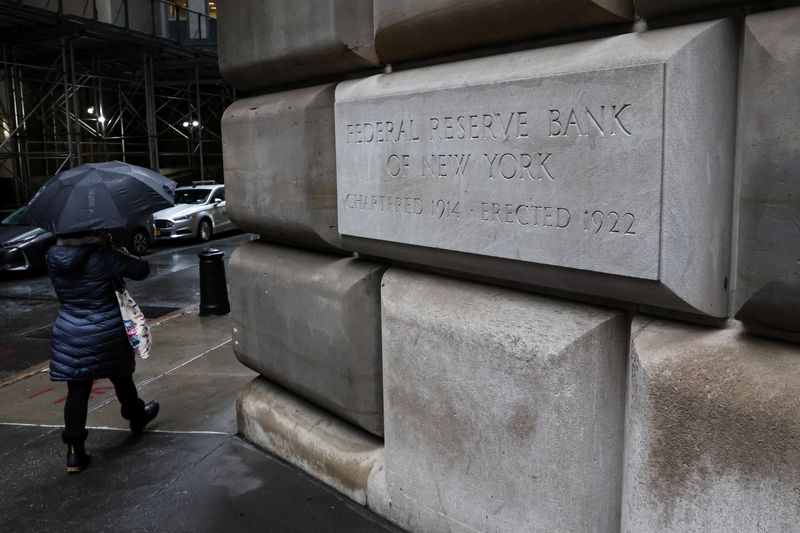By Michael S. Derby
NEW YORK (Reuters) -Supply chain pressures turned positive last month for the first time in just over a year but remained near normal and were well under the levels of high stress seen during the most acute phase of the coronavirus pandemic, a Federal Reserve Bank of New York report released Wednesday said.
The bank said its February Global Supply Chain Pressures Index rose to a reading of 0.1 for last month, from a revised -0.23 reading in January.
It was the first positive reading since January 2023. The bank provide no information on the factors that drove the index's level.
Falling supply chain pressures--the New York Fed index peaked on December, 2021 when it hit 4.35--have been a key force helping lower inflation pressures.
Rapidly cooling price pressures back toward the Fed's 2% inflation target have opened the door toward what are likely to be central bank rate cuts this year, although some unevenness in that retreat have complicated the question of when the easing might start. The relative calm of the supply chain index is likely to bolster Fed confidence that price pressures are indeed falling.
The Fed has been warning for some time that geopolitical risks are a notable uncertainty in the outlook. There have been fears shipping disruptions tied to conflict in the Middle East could add upward pressure to inflation, but thus far that pressure has yet to materialize in a notable way.
Atlanta Fed leader Raphael Bostic noted on Monday that among his risks to the outlook, "severe drought at the Panama Canal and terrorist actions in the Red Sea threaten to complicate global shipping and exert upward pressure on prices."

Some in the Fed expect the drop in supply chain pressures to be an ongoing factor that might help inflation pressures continue to cool.
In a CNBC interview on Friday, Chicago Fed leader Austan Goolsbee said the index is back to pre-pandemic levels "but that the impact of that is not instantaneous, I still think there is a quite a possibility that that could flow through” and continue to help pressure pressures cool.